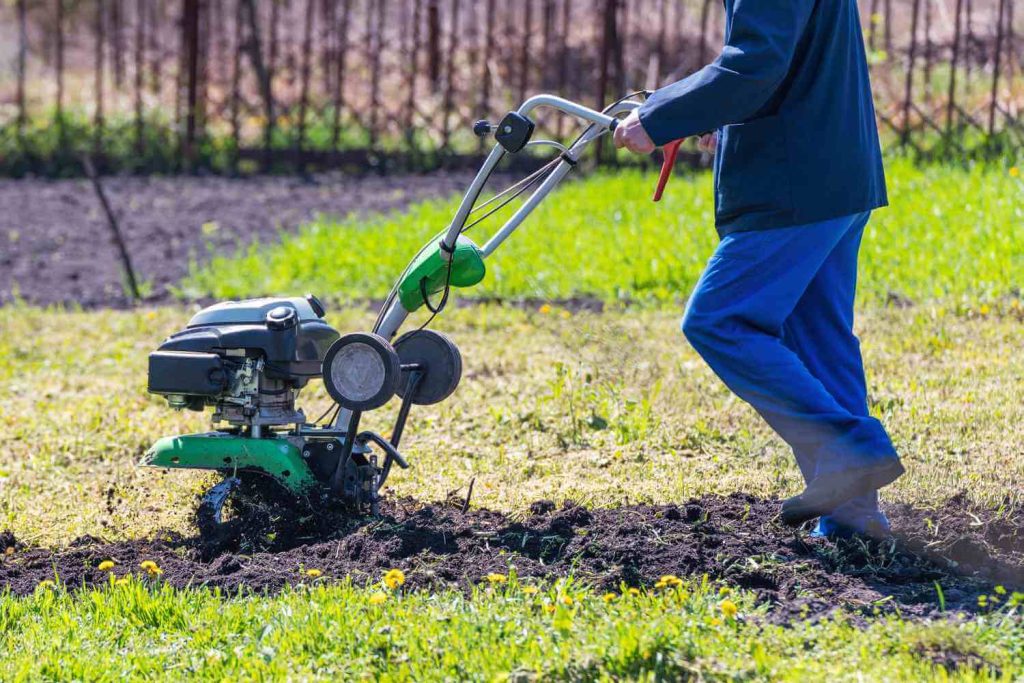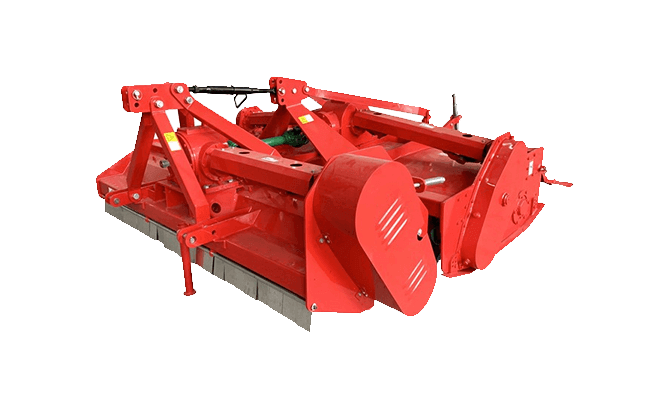In agricultural production, mechanization has become an important means to improve efficiency and yield. Among various agricultural machines, tiller and rotary tillers are the two most common options. Although both are used for soil cultivation, they have significant differences in function, use cases, and maintenance. These differences can impact your farming decisions and, consequently, the growth and harvest of your crops.
When choosing tillage machinery, you need to consider your farming needs, soil type, crop varieties, and economic situation. In simple terms, tillers are very suitable for large-scale, high-efficiency operations, while rotary tillers are better for detailed cultivation of high-value crops. Choosing the right machine can not only improve production efficiency but also make the farming process easier and more enjoyable.
Below, we will explore the characteristics of these two machines from various angles to help you select the right tool for your needs.
Contents
- 1 Basic Definitions of Tillers and Rotary Tillers
- 2 Comparison of Main Functions
- 3 Analysis of Suitable Scenarios
- 4 Details on Operation and Maintenance: Usability and Maintenance Costs
- 5 Economic Considerations: Investment and Return
- 6 User Feedback and Case Studies
- 7 Future Development and Trends: The Evolution of Agricultural Machinery
- 8 Conclusion: How to Make an Informed Choice
Basic Definitions of Tillers and Rotary Tillers
Before delving into a comparison, let’s first understand the basic definitions of these two machines.
Tiller
A tiller is a type of agricultural machinery designed for soil cultivation. It uses powerful engines and specialized blades to turn and loosen the soil, preparing it for subsequent planting, fertilizing, and irrigation. Tillers are suitable for large-scale operations and perform well in harder soils.

Rotary Tiller
A rotary tiller is a machine that cuts and mixes the soil with high-speed rotating blades. It can achieve deep tillage and also mix fertilizers with the soil, creating an ideal planting environment. Rotary tillers are suitable for small-scale cultivation of high-value crops, such as vegetables, fruits, and flowers.

Comparison of Main Functions
Tillers and rotary tillers have distinct functions that cater to different farming needs.
Functions of Tillers
- Soil Tillage: Tillers can quickly turn the soil, making it loose and creating a good environment for planting crops.
- Weed Control: By tilling the soil, tillers effectively eliminate weeds and reduce the risk of pests and diseases.
- Moisture Retention: The tilled soil can better retain moisture, enhancing the growing conditions for crops.
Functions of Rotary Tillers
- Fine Tillage: Rotary tillers use rotating blades to finely process the soil, making them ideal for high-value crops.
- Fertilizer Mixing: They can evenly mix applied fertilizers into the soil, ensuring adequate nutrient distribution.
- Improved Planting Quality: The loosened and even soil after tilling provides a better growing environment for seeds.
Analysis of Suitable Scenarios
When choosing tillage machinery, the applicable scenario is an important consideration. Tillers and rotary tillers each have advantages in different contexts.
Suitable Scenarios for Tillers
- Large-Scale Farms: For extensive farmland, tillers can efficiently complete tillage tasks, saving time and labor.
- Hard Soil: In dry, hard soil conditions, tillers can easily turn the soil, helping farmers prepare for planting.
- Initial Tillage: Tillers are very suitable for large-scale soil tillage before spring planting.
Suitable Scenarios for Rotary Tillers
- Small-Scale Planting: For small areas of high-value crops, such as fruit trees and vegetables, rotary tillers provide better fine tillage.
- Horticultural Work: In gardening tasks requiring careful soil handling, rotary tillers can be more effective.
- Re-Tillage Operations: Rotary tillers can effectively re-till and fertilize fields where crops have already been planted.
Details on Operation and Maintenance: Usability and Maintenance Costs
When selecting machinery, ease of operation and maintenance costs are also crucial. Let’s look at the differences.
Operation and Maintenance of Tillers
- Ease of Use: Tillers are usually designed to be straightforward, allowing farmers to quickly get started, making them suitable for large-scale operations.
- Maintenance Requirements: Regular checks on blades and the transmission system keep the machine performing optimally. Simple maintenance tasks can be easily completed using the user manual.
Operation and Maintenance of Rotary Tillers
- Operational Skills: Operating it requires more skill, especially on uneven terrain and when turning, needing some experience.
- Maintenance Needs: The blades of rotary tillers wear out quickly, so regular replacement is necessary to ensure efficient operation. Additionally, adjusting the blades is important for maintaining effective tillage.
Economic Considerations: Investment and Return
For farmers, economic benefits are one of the main concerns when choosing machinery. Let’s examine the investment returns for tillers and rotary tillers.
1. Investment Returns for Tillers
- Lower Initial Investment: The purchase cost of tillers is relatively low, making them suitable for farmers with limited budgets.
- Returns from Efficient Operations: In large-scale farming, tillers can effectively reduce labor costs and increase work efficiency, leading to a higher return on investment.
2. Investment Returns for Rotary Tillers
- Higher Initial Investment: The initial cost of rotary tillers is usually higher, but the returns from growing high-value crops are evident.
- Increased Yield and Quality: Rotary tillers can significantly enhance crop growth speed and quality through fine tillage, making the investment worthwhile in the long run.
User Feedback and Case Studies
Real user feedback can provide valuable insights for your choices.
User Experience with Tillers
Many farmers using tillers report a significant increase in planting efficiency after mechanized tillage. Especially during early spring, tillers can quickly complete large-scale tillage, saving considerable time and labor. They also perform well in weed control, helping farmers reduce the burden of later management.
User Experience with Rotary Tillers
Users of rotary tillers generally note a marked improvement in crop growth quality. In particular, rotary tillers can evenly mix fertilizers into the soil, enhancing nutrient absorption. Users also mention that the flexibility of rotary tillers allows them to perform well in complex terrains, meeting various tillage needs.
Future Development and Trends: The Evolution of Agricultural Machinery
With continuous technological advancements, agricultural machinery is also evolving. Staying informed about future trends can help you choose machines that better meet your needs.
1. Smart Machinery
Smart agricultural machinery is becoming a key direction for future development. Many new tillers and rotary tillers are incorporating features like automatic navigation and smart control systems, enhancing operational precision and efficiency.
2. Environmental Protection and Sustainability
In modern agriculture, environmental protection and sustainability are crucial issues. The latest generation of machinery focuses more on effective resource utilization and minimizing environmental impact. For example, electric or hybrid-powered tillage machines can reduce fuel consumption and carbon emissions.
Conclusion: How to Make an Informed Choice
Choosing the right tillage machinery can enhance production efficiency and save time and labor in daily management. Whether it is the efficient operation of tillers or the precise tillage of rotary tillers, you should base your choice on the size of your farmland, the type of crops, and your personal operational capabilities.
We hope this article provides you with a deeper understanding of tillers and rotary tillers. In your future farming endeavors, make the choice that best suits your needs. If you want to learn more about selecting agricultural machinery and related information, please visit our Minuo website. We offer a wealth of resources and support. Let’s embrace the harvest season together and create a brighter future for agriculture!

